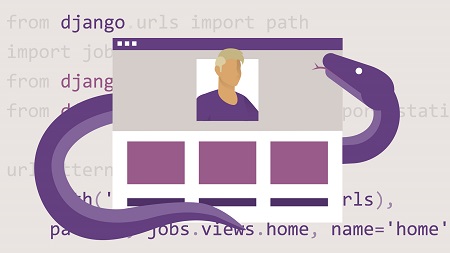
English | MP4 | AVC 1280×720 | AAC 48KHz 2ch | 1h 54m | 392 MB
Django—an open-source web framework that’s designed on top of Python—can help you quickly bring your website ideas to life. In this course, learn the basics of Django for web development by building your own website—a personal portfolio—from the ground up. Instructor Nick Walter steps through how to create a database, design the layout for your website, and add and update URL paths. Learn how to connect your Django project to Postgres, add static files and URLs, and more.
Topics include:
- Setting up URLs in your Django project
- Creating models in Django
- Connecting your Django project to Postgres
- Adding static images
- Designing the layout for your website
- Creating object views
- Updating URL paths
Table of Contents
Introduction
1 Creating a website with Python
2 What you should know
Portfolio Project Overview
3 Demo project overview
Creating Django Apps
4 Starting a new project in Django
5 Creating a Django app in a project
6 Setting up URLs in your Django project
Django and Databases
7 Creating the models in Django
8 Postgres setup for Django
9 Connecting your Django project to Postgres
10 Make Django migrations and migrate
11 Setting up an admin panel in Django
12 Creating model objects via the admin panel in Django
13 Pulling objects from the database in Django
Designing Your Django Project
14 Bootstrap overview and installation
15 Page layout and templates in Django
16 Adding static images to your Django project
17 Collectstatic in Django
18 Bootstrap as a static asset in Django
19 Finishing touches in Django design
Object Details in Django
20 Connecting URLs and templates in Django
21 Creating views in Django
22 Designing object detail views
23 URL paths with parameters
Conclusion
24 Next steps for Django
Resolve the captcha to access the links!